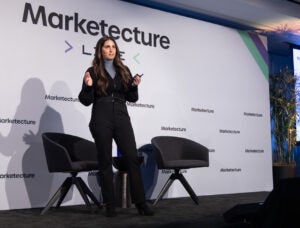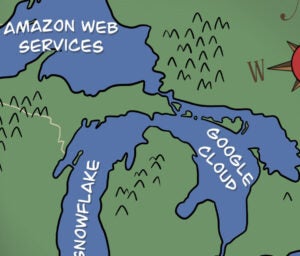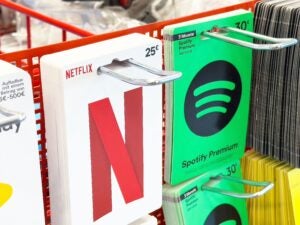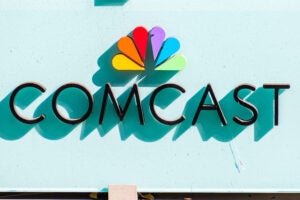
The debate over which will prevail – native apps or the mobile web – is moot.
The question, rather, is not which will win, but when the two will merge into a more fluid system centered on content and discoverability, rather than friction and discrete downloads.
“We’re going to see less disparity between the mobile web and what we know as apps,” said Jim Schinella, chief business officer at Fyber. “It’s a natural evolution. Innovation will always go to the heart of where there’s friction.”
Although virtual reality headsets, slick new phones, the Internet of Things and driverless cars will steal most of the headlines at Mobile World Congress this year, it’s mobile software – the thing that powers all these things – that’s set to be a sleeper theme.
On Monday, roughly 100,000 mobile execs will converge on Barcelona for the show.
“Traditionally, Mobile World Congress has been a hardware show, but, obviously, the little apps world is growing and we’re seeing more and more of the expo halls covered by software vendors,” said TUNE CEO Peter Hamilton. “If I sit down at MWC with anyone in retail or any brand this year, they will at some point ask about how apps and the mobile web connect.”
Each has its upsides and downsides.
The mobile web is lightweight and browsable. It’s also often clunky and doesn’t command much user engagement.
Apps are handy little containers for content and personalized experiences. But they’re also mainly isolated from each other, and the app stores are so saturated that discoverability is basically nil.
The industry has started to respond with a number of solutions that speak to the breaking down of barriers between apps and the mobile web, and also between apps and other apps.
“There has certainly been a lot of investment in the space recently,” Hamilton said. “We’ve seen Silicon Valley put their dollars into startups that support deep linking and the connection between apps.”
Deep-linking startup Branch, for example, has been on a fundraising tear since it opened its doors in 2014. The company has raised a total of $53 million, including a $15 million Series A in February 2015, swiftly followed by a $35 million Series B round in January. Mobile app search company Quixey has raised $134 million since 2009, including most recently a $60 million Series C led by Alibaba.
The big guys are also getting quite serious about deep linking. Facebook has App Links, for example, and Apple has Universal Links.
Google is also rolling up its sleeves as part of an effort to woo users back to the web with app-like experiences. Using technology it acquired from app streaming startup Agawi, Google expanded its ongoing app indexing project in November with the test of a feature that would allow users to stream functional versions of apps directly to their Android phone without having to download them first.
On Friday, that feature exited beta. Android Google App searches now bring up a “Try Now” button that allows users to stream an app to their device in real time sans download.
It’s worth noting that games apps have already been doing something quite like this for some time. Companies such as mNectar, Voxel, inMobi, Tresensa and, more recently, Zynga all have try-before-you-install app ad products.
Now, it’s starting to become more mainstream.
“Especially with commerce coming in, users need a really seamless interface to browse, shop and buy, to go through each part of the customer journey,” Hamilton said. “And the fact is that these things exist across apps and the mobile web, and people need to easily access both.”
It all boils down to navigation, discoverability and recommendations to keep the engagement going. In other words, it’s apps becoming as accessible as web browsing and the mobile web becoming as experiential as apps.
“There is an innate drive across all forms of media, not just digital media, to create content that will appeal to an audience and help aggregate an audience,” Fyber’s Schinella said. “And at the end of the day, if you’re successful in doing it, you create a great mini-ecosystem for advertisers to connect with these audiences.”
The future is around content, and whether that content is accessible through the mobile web or an app is only as relevant as the question: Where does it make the most sense for a user to engage in this particular situation?
“At the market level we’re seeing a move toward apps as content and the web as content, and the expectation for developers and also for marketers is that they can exist in a world where it’s about information, not containers,” said John Milinovich, CEO and co-founder of URX.
But how does that change the economy around user acquisition? Developers are compelled to pay an app’s ransom for loyal users.
According to Fiksu, the cost per loyal user in December was $4.23 on iOS – up from $2.10 in December 2014. The only logical response is for developers to recalibrate their focus to lifetime user value, as many are already doing. Fifty-one percent of app install teams plan to focus more of their time on LTV in 2016, according to research released Friday by AdColony.
“There are only so many people on the planet and there are only so many apps you can have on your phone – eventually you reach a saturation point and have to start focusing on engagement,” Hamilton said. “That’s why it makes so much more sense to deliver exactly what someone is searching for as quickly as possible without them having to put something on their home screen first.”
This year, the conversations you’ll overhear at Mobile World Congress won’t be about slinging downloads like a guy in a trenchcoat selling fake Rolexes in Times Square – they’ll be about creating quality experiences and stitching those experiences together, Hamilton said.
“Even just a few years ago all the slogans on the booths were about driving new installs for the best price,” he said. “The marketing slogans I think you’ll see this year will be focused on LTV, on ROI and on engagement.”














